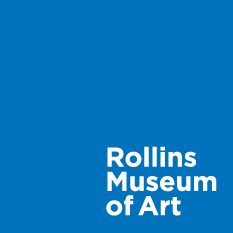Elihu Vedder (American, 1836-1923), Superest Invictus Amor (Love Ever Present), 1887, Oil on canvas, 34 ¾ x 12 ¼ inches […]
Work of the Week: William Williams’ “The (William) Denning Family” | In the Spirit of Conversation, a Confession by Dr. Grant Hamming
William Williams (American, 1727-1791) The (William) Denning Family, 1772, Oil on canvas, 35 ½ x 52 inches Benjamin West (American, 1738-1820), […]
Work of the Week: F. Holland Day, “Ziletta”
F. Holland Day, the creator of this work, would be considered something of an eccentric today. In fact, he was considered something of an eccentric in his own day, as well. Day was the son of a successful businessman in Norwood, Massachusetts, and early on showed an interest—nurtured by his parents—in art and literature. Though he did not attend college, Day quickly fell in with a crowd of bohemians in Cambridge and Boston, with whom he carried out wide-ranging discussions on art, beauty, and life, often over beers in one of a number of out-of-the-way taverns on either side of the Charles River (which divides the cities of Cambridge and Boston). During this period Day became fascinated by the work of British artist and social reformer William Morris, whose Kelmscott Press produced lavish editions of works by Romantic poets and copies of illuminated Medieval manuscripts, among other delights. Determined to follow in Morris’s footsteps, Day established the firm of Copeland and Day with a friend. They quickly made an impact on the American art book market, producing the first American editions of such important works as Oscar Wilde’s Salomé and the periodical The Yellow Book, both illustrated by Aubrey Beardsley.
Work of the Week: Emilio Sanchez, “Untitled, Blue House with White Shutter, St. Barts”
Sanchez was born in Cuba, to a wealthy family that was involved in the sugar trade. Like other members of Cuba’s pre-Revolutionary upper class, he was mostly educated in the United
States. After a few years in Florida, he made his was to the Northeast, where he overlapped at Choate with future President John F. Kennedy. After college (Yale followed by the University of Virginia), he studied at the Art Students League, splitting his time between his father’s estate in Cuba, his mother’s residence in Mexico, and New York. He also traveled throughout the Caribbean, gathering subject material for his prints and paintings depicting the bright sunshine and vernacular architecture of the region.
Work of the Week: Hiram Powers, “Faith”
Hiram Powers (American, 1805-1873), Faith, ca. 1867, white seravezza marble, 29 in. x 20 in. x 12 in. sculpture, Gift of Hiram Powers II, grandson […]
Work of the Week: Jacob Lawrence, “Revolt on the Amistad”
Jacob Lawrence (American, 1917-2000), Revolt on the Amistad, 1989, Silkscreen, 35 x 25 3/8 in. Museum Purchased from the Wally Findlay Acquisition Fund, 1995.26., © […]
Work of the Week: Emory Douglas, “Warning to America-We are 25-30 million strong”
Born in Grand Rapids, Michigan, Emory Douglas moved with his mother to San Francisco when he was eight. At age […]
Work of the Week: Romare Bearden, “Byzantine Frieze (from the series Ritual Bayou)”
Romare Howard Bearden American (Charlotte, North Carolina, United States, 1911 – 1988), Byzantine Frieze (from the series Ritual Bayou), 1971, lithograph collage, 17 7/8 […]
So Long, But Not Goodbye
The very first post in this series went live on April 1, 2020, amidst the first waves of shutdowns (including […]
The Quiet Dignity of Everyday Life
A year ago, I wrote about John Sloan’s The Women’s Page as part of a discussion of the prevalence of […]
Joseph Cornell, James Rosenquist, and Generational Transmission
Back in September, I wrote about the affinities between Joseph Cornell and Earl Cunningham, two untrained eccentrics who made collecting […]
George Grosz and America
When I saw the listing on the CFAM website for the artist George Grosz, I wondered if someone had made […]
The Underappreciated Tom Wesselmann
A few weeks ago, I wrote about Wayne Thiebaud, whose career has been much more varied than I had previously […]
Some Notes on Historical Notability
Usually in this space I am eager to share my most exciting finds, such as my renewed appreciation for Wayne […]
California Dreamin’ With Wayne Thiebaud
There is just something about landscape art that helps transport me to past times and places. I was reminded of […]
